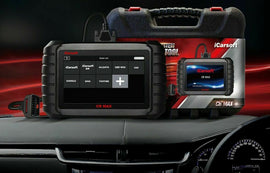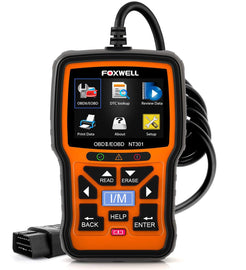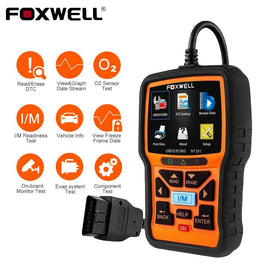When driving, having clear vision is crucial, especially at night or in adverse weather conditions.
However, a lot of drivers fail to notice the headlights, which are the most important safety feature on their cars. Being aware that the headlights need replacement can mean the difference between a safe and a dangerous trip.
Worn-out or broken headlights can make it harder to see and increase your chances of getting into an accident, especially in low-light conditions.
So, how do you know if the headlights of your car need an upgrade? There are many signs, and we will discuss 7 of them in this article.
7 Signs Your Headlights Are Telling You It's Time for Replacement
The lights on your car are like its eyes; if they're weak, drained, or blurry, you're driving without vision. Here are some ways to recognise the warning signs that shout, 'Upgrade me!' or when your Headlights Need Replacement.
1. Dimming or Flickering Lights
Dim or erratic lighting is one of the first car headlight replacement signs. When your headlights flicker while you're driving or appear duller than they did at first, it's a clear sign that they're getting close to the end of their useful life.
Electrical problems or bulb deterioration may be to blame. A sudden failure can be avoided by routinely checking for causes of dim headlights, such as condensation in the housing or voltage issues.
2. Yellowed or Cloudy Headlight Lenses
The effectiveness of your headlights can be significantly diminished by yellowed or foggy lenses, even if the bulbs themselves are fine. Reduced visibility results from the plastic covering the lights breaking down over time due to oxidation and UV rays.
Depending on how bad the situation is, you might have to either replace the entire assembly or polish the lenses. This problem is prevalent in older models as well as halogen headlights for cars.
3. Uneven Light Distribution
Your lighting system needs to be inspected if there is a noticeable difference in brightness between the two headlights or if the beam pattern is not uniform. Damaged reflectors, a partially working bulb, or a misaligned headlight can all cause uneven distribution.
This causes blind spots in your vision, which are particularly hazardous at night when driving around curves or on rural roads.
A car diagnostic scan tool can assist in determining whether an internal issue, such as a malfunctioning headlight control module, is the cause of the uneven light.
4. Lights Not Turning On at All
The most obvious indication that your headlights need to be replaced is probably this. A burned-out bulb, blown fuse, or wiring problems could be the cause of your headlights not turning on.
To ascertain whether the issue is systemic or isolated, examine the low and high beams. To keep the road evenly lit, it's a good idea to replace both headlights at once.
5. Colour Change in Light Output
Your headlights are wearing out if the light beam changes colour, either from white to blue or from yellow to yellow. This is particularly important for HID systems or LED auto headlights.
The bulb's output weakens when it turns yellow, which can make it harder to see on the road and cause eye strain while driving at night. For safe driving, colour and brightness must be consistent.
6. Frequent Bulb Burnouts
Are you replacing your headlight bulbs more frequently than you should? Although the majority of headlight bulbs are designed to last hundreds to thousands of hours, early burnouts may indicate a more serious underlying issue.
Your headlights' lifespan can be shortened by bad alternators, subpar bulbs, or even too much moisture. In these situations, think about doing an electrical inspection or moving to a more robust lighting system.
Making the switch to premium halogen or LED auto headlights can improve performance and significantly increase the time between replacements.
7. Outdated Headlight Technology
Older technology might not provide the brightness, efficiency, or coverage of more recent models, even if your headlights are still operational.
In terms of brightness and energy efficiency, LEDs are currently outperforming the stock halogen headlights found in many older cars. Making the switch to contemporary systems could significantly enhance safety and comfort, particularly if you frequently drive at night or in rural areas.
When the time comes to upgrade, it's critical that you buy car headlights in Australia from reliable vendors who adhere to regional traffic safety regulations.
Maintaining Your Headlights: Proactive Steps to Stay Safe
While it's critical to recognise these symptoms, prevention is just as vital.
Here are some headlight maintenance tips:
-
Regularly clean lenses with UV protectant or plastic polish.
-
Verify alignment to guarantee uniform road lighting.
-
To prevent uneven lighting, replace both bulbs at the same time.
-
At regular service intervals, check the wiring for corrosion or other issues.
Don't undervalue the importance of functional and efficient headlights for road safety, even though your car's engine may receive the majority of attention.
You can avoid risky driving situations and expensive repairs by being aware of when to change car headlights and spotting early warning signs.
Conclusion
Car headlights are more than just a basic component—they are a critical safety feature that ensures clear vision during night drives, rain, or fog.
Recognising the early signs of headlight wear, like flickering, yellowing, or outdated technology, helps you stay safer on the road and avoid unexpected failures.
At Autolines Australia, we offer a wide selection of high-quality GPS trackers and premium car headlights, including halogen, HID, and LED options designed to meet Australian safety standards.
Whether you're upgrading for visibility, performance, or style, our expert team can help you choose the right fit for your vehicle. Drive safe—see better with Autolines.
FAQs
1: How to know if headlights are bad?
If your headlights are dim, flickering, discoloured, or not turning on at all, it’s a sign they’re failing. Yellowed lenses, uneven light patterns, or frequent bulb burnouts also indicate it's time for a replacement or upgrade.
2: Why are my headlights so dim?
Ageing bulbs, foggy or oxidised lenses, electrical issues, or moisture in the housing may cause dim headlights. These issues reduce visibility, especially at night, and can be dangerous if not addressed promptly with cleaning or replacement.
3: Do car headlights fade over time?
Yes, headlights fade due to UV exposure, oxidation, and general wear and tear. The plastic lenses can become cloudy or yellowed, while the bulbs gradually lose brightness. Regular maintenance and timely upgrades can restore visibility and improve road safety.









